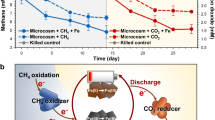Abstract
SOME sheep appear to pass consistently lower urine volumes than others, and during metabolism cage experiments with HK and LK 1 Scottish Blackface sheep there was a suggestion that within each of these two groups there was much more variation between animals than between repeated observations on the same animal, and that, on the whole, urine volumes from LK animals tended to be lower than those from HK animals. The results of an analysis of the results from fifteen trials involving 19 LK and 17 HK animals are given below. Four or six animals were used per trial and equal numbers of LK and HK were used in all except three trials. The animals were in the cages for 10, 20, 32 or 93 days in each trial. A standard ration of hay and concentrates (oats and linseed meal) was fed throughout, and a sodium chloride supplement was given in all except three trials, but this did not have a marked effect on urine output.
Similar content being viewed by others
Article PDF
References
Evans, J. V., Nature, 174, 931 (1954).
Author information
Authors and Affiliations
Rights and permissions
About this article
Cite this article
EVANS, J. Water Metabolism in the Sheep. Nature 180, 756 (1957). https://doi.org/10.1038/180756a0
Issue Date:
DOI: https://doi.org/10.1038/180756a0
This article is cited by
-
Genetic control and adaptive significance of blood potassium types in some indigenous and exotic breeds of sheep in India
Journal of Genetics (1972)
-
The adaptive significance of blood potassium and hemoglobin types in sheep
Experientia (1968)
-
Water intake in relation to blood potassium types in desert sheep
Experientia (1967)
-
Evidence of genetic control of blood potassium type in the marwari breed of sheep in India
Experientia (1967)
Comments
By submitting a comment you agree to abide by our Terms and Community Guidelines. If you find something abusive or that does not comply with our terms or guidelines please flag it as inappropriate.



